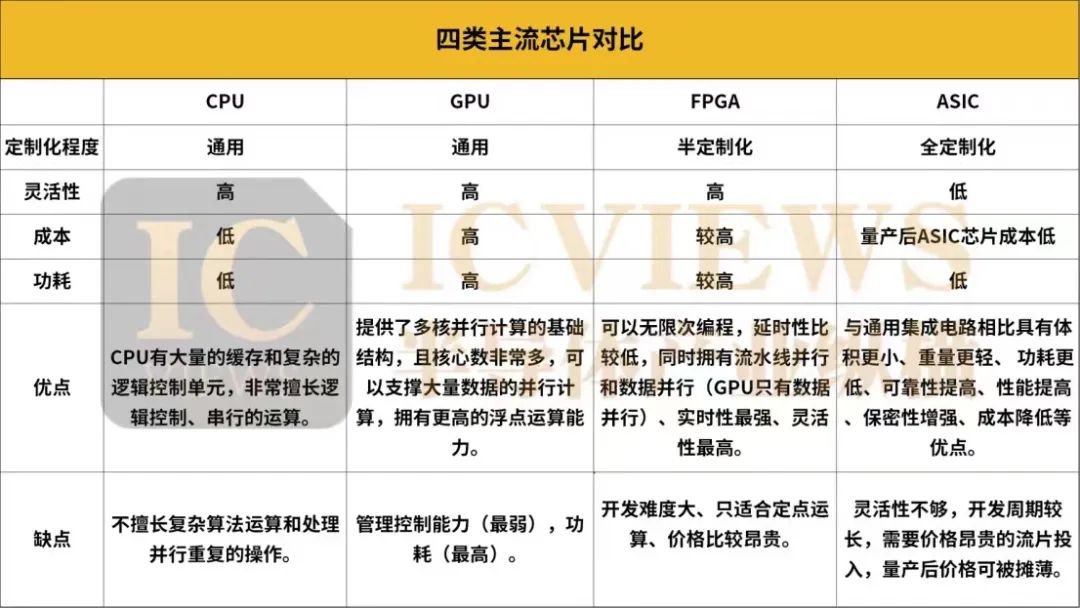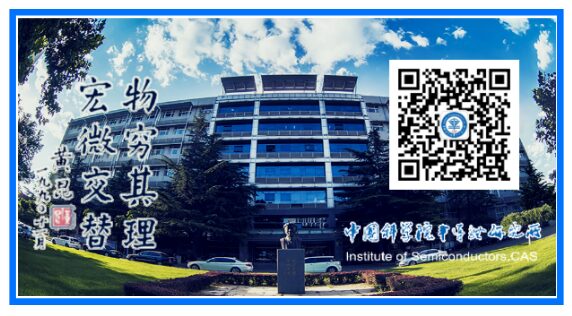
Source: Semiconductor Industry Review
Original Author: Feng Ning
Characteristics of FPGA
FPGA chips are developed based on programmable devices (PAL, GAL, CPLD) and are semi-custom, programmable integrated circuits. FPGA primarily has three major characteristics:
High Programmable Flexibility
Once chips such as CPU, GPU, DSP, Memory, and various ASICs are manufactured, their functions are fixed, and users cannot modify their hardware functionality. However, after the manufacturing of FPGA chips, their functions are not fixed; users can configure the FPGA chip’s functionality using dedicated EDA software provided by the FPGA chip company according to their actual needs, transforming the blank FPGA chip into an integrated circuit chip with specific functions.
Each FPGA chip can be configured multiple times for different functions, achieving high flexibility.
Short Development Cycle
In the logic chip domain, the ASIC manufacturing process includes multiple steps such as logic implementation, wiring processing, and tape-out; whereas FPGA does not require wiring, masks, or custom tape-out, greatly simplifying chip development. Typically, the development cycle for logic chips like ASIC, DSP, SOC, etc., takes 14-24 months or even longer, while FPGA only requires 6-12 months, reducing the development time by 55% compared to other chips.
High Parallel Computing Efficiency
FPGA belongs to parallel computing, meaning it can execute multiple instruction algorithms at once. In contrast, traditional ASIC, DSP, and CPU are serial computing, processing only one instruction set at a time. Therefore, in certain special tasks, FPGA’s parallel computing efficiency is higher than serial computing efficiency.
CPU, GPU, ASIC, and FPGA are four types of computer processors, each with unique advantages.
 Comparison of FPGA with Mainstream Chips
Comparison of FPGA with Mainstream Chips
CPU has fewer logical operation units (ALUs) and a larger proportion of controllers; GPU has small but numerous logical operation units (ALUs), with simpler controller functions and less cache. The architectural differences make CPU adept at logical control and serial computing, while GPU excels at high-intensity parallel computing. Although a single processing unit of GPU is weaker than CPU’s ALU, the numerous processing units can work simultaneously, making its performance superior to CPU when faced with high-intensity parallel computations. Nowadays, GPUs are increasingly used in various calculations beyond image processing.
It can be said that CPU is more like an excellent leader with multiple functions. Its strength lies in scheduling, management, and coordination, while its computational power is secondary. GPU, on the other hand, is akin to an “employee with a lot of computational power” that follows the CPU’s scheduling.
ASIC, or Application-Specific Integrated Circuit, refers to integrated circuits designed and manufactured according to specific user requirements and the needs of specific electronic systems. ASIC is characterized by being tailored to specific user demands, offering advantages such as smaller size, lower power consumption, enhanced reliability, improved performance, greater confidentiality, and reduced costs compared to general-purpose integrated circuits when mass-produced.
Developing AI chips based on ASIC is more like circuit design, requiring repeated optimization and a longer tape-out cycle, resulting in a longer development cycle.
After mass production, the cost and price of ASIC AI chips are relatively low. Although ASIC AI chips require a longer development cycle compared to FPGA and involve expensive tape-out investments, these upfront development costs will be amortized after mass production, resulting in lower costs and prices for ASIC AI chips compared to FPGA AI chips after mass production.
Benefiting from its unique architecture, FPGA’s programmability allows it to achieve a better balance between computing power, cost, and power consumption compared to other processors.
Main Applications of FPGA
Due to its high programmable flexibility, short development cycle, and high parallel computing efficiency, FPGA has a particularly wide range of application scenarios.
Communications is currently the largest application market for FPGA. FPGA’s applications in the communications field include network switching, communication protocol conversion, and traffic control. It can be used for efficient data processing and large-scale RF relaying. For example, in 5G communication technology, FPGA is used for signal processing and data processing in base stations, enhancing the performance and stability of communication systems.
The industrial sector is one of the main application markets for FPGA chips. FPGA is primarily used in video processing, image processing, and CNC machine tools to implement signal control and computation acceleration. For instance, in automated production lines, FPGA is used to control the movement of robotic arms and coordinate the operation of various devices.
Data centers are an emerging application market for FPGA chips. In the realm of computational processing in data centers, FPGA chips are mainly used for hardware acceleration. Compared to CPUs, FPGA chips can provide powerful computing capabilities and sufficient flexibility due to their instruction-less architecture and lack of shared memory; compared to GPUs, FPGA chips offer low latency and high throughput in data centers; compared to ASICs, FPGA chips achieve excellent balance in terms of flexibility and development time.
With the rise of electric vehicles, FPGA’s applications in automotive electronics are becoming increasingly widespread. The demand for FPGA in the automotive electronics industry mainly comes from ADAS (Advanced Driver Assistance Systems) and AV (Autonomous Vehicles). For example, FPGA chips can be used to control and drive electric vehicle motor control systems, connecting various onboard devices such as driving systems, dashboards, radar, and ultrasonic sensors, enabling signal processing and control for LiDAR, millimeter-wave radar, etc. In the realm of video bridging and fusion, FPGA chips can be used to implement functions such as signal bridging from multiple image sensors, 3D panoramic video fusion, rear-view assistance video, and assisted driving video. In the fields of assisted driving and autonomous driving, FPGA chips can be used to implement various functions such as machine vision and target detection.
In the era of artificial intelligence, AI algorithms are continuously evolving, requiring high computational power and flexibility from hardware. FPGA’s flexibility aligns perfectly with the characteristics of AI. FPGA is mainly used as an accelerator for matrix multiplication algorithms and as an executor for neural network accelerators. It can achieve low-latency computation and high-performance operations, providing robust hardware support for the development of artificial intelligence. For instance, in deep learning, FPGA is used to accelerate the inference and training processes of neural networks, improving the processing speed and energy efficiency of AI systems. Additionally, with the increasing popularity of heterogeneous computing integration, architectures such as FPGA+CPU also bring more potential advantages to AI.
END
The reproduced content only represents the author’s viewpoint
It does not represent the position of the Semiconductor Institute of the Chinese Academy of Sciences
Editor: March
Editor-in-charge: Mu Xin
Submission Email: [email protected]
1. The Semiconductor Institute has made progress in the research of bionic coverage-type neuron models and learning methods.
2. The Semiconductor Institute has made significant progress in inverted structure perovskite solar cells.
3. Why do chips use copper as interconnect metal?
4. What exactly is the 7nm in chips?
5. Silicon-based integrated photonic quantum chip technology.
6. How anomalous is the quantum anomalous Hall effect? It may lead to the next revolution in information technology!
